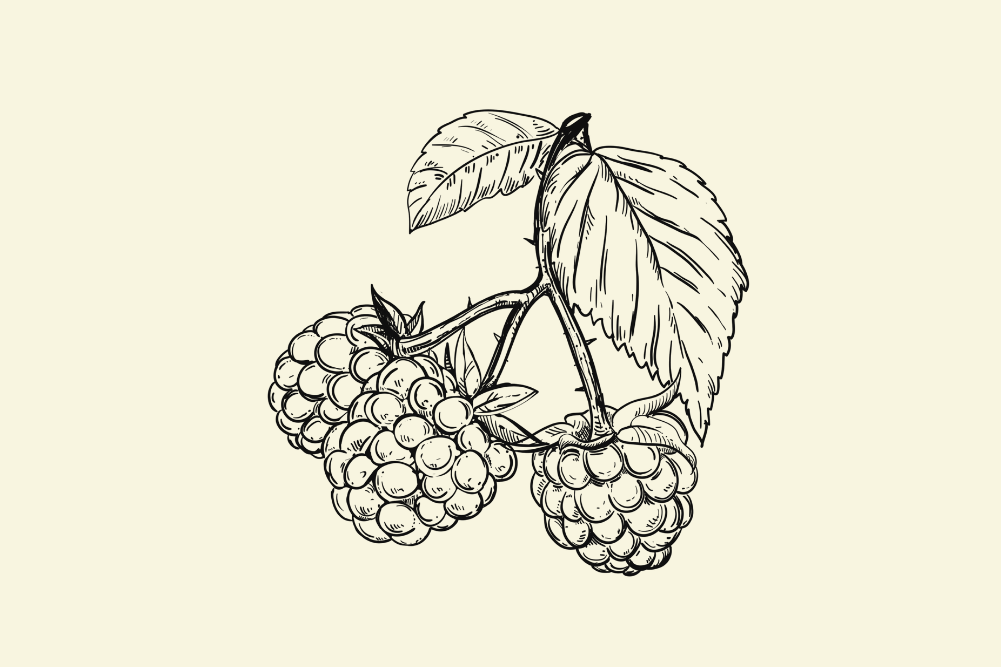Natural therapies for headache relief
Nearly all of us will suffer from a headache during our lifetime; those less fortunate will suffer from migraines. In fact, followed by back pain, headaches and common colds are the two main causes of time off work for Australians. According to an Australian National Health Survey conducted in 2001, 2.2 million people reported they had headaches that had started recently, while 22,000 reported headaches on a longer-term basis. The disease of the nervous system, otherwise known as a migraine, affects around five per cent of the Australian male population and 15 per cent of the female population, and is most common in people between 35 and 44 years.
According to Aled Francis, a manipulative physiotherapist from the Sydney Headache Clinic, a headache pain that is one-sided, lasts between four and 72 hours and is of moderate to severe intensity is diagnosed as a "migraine without aura". Similarly, a headache that occurs on both sides of the head, lasts from 30 minutes to seven days and is of a mild to moderate intensity is diagnosed as a "tension headache". While migraines tend to occur now and again — that is, we can anticipate when they will occur; for example, if they are hormonal they will occur once a month with the menstrual cycle — tension headaches tend to be more constant. Headaches are usually considered less severe than migraines with a lower intensity of pain and headaches are not usually associated with the extreme visual or sensory disturbances, nausea, vomiting, irritability and intolerance of light that often accompany migraines.
Causes
There are virtually no investigative techniques that can detect the existence of an abnormality that’s causing the migraine or tension-type headache symptoms. There are many different theories about what could be causing a migraine. Migraines often have similar causes to headaches, and many patients suffer both. In many cases, a number of causes might combine to produce a migraine. It’s commonly believed that headaches are the result of irritation to nerves and pain-sensitive structures in the head and neck, but any of the following may cause a headache:
- Poor dietary habits and irregular eating habits: Eating food low in nutrients and eating irregularly can be potent headache triggers.
- Food: Foods that have been known to trigger headaches include alcohol, chocolate, citrus fruits and dairy products, especially cheese.
- Nervousness: Noisy, polluted environments, a hectic lifestyle, over-activity, accumulated fatigue and excessive worrying can cause nervous headaches. Headaches of this origin are often experienced by people who try to do too much.
- Constipation: Mild constipation often gives rise to dullness or heaviness in the head, but when constipation becomes more chronic, with it comes a more persistent headache.
- Stress: Stress is associated with a number of different types of headaches and is often an aggravating factor in headache attacks.
- Blocked nostrils: According to Ayurveda, ignoring the problem of a blocked nose may lead to more serious health problems, headaches, migraines or pain in the jaw, ear or shoulders.
- Menstruation: Women tend to suffer from headaches and migraines more than men do, which has often been connected with menstruation. Poor postural or sleeping habits: Headaches can occur as a result of poor postural or sleeping habits. For example, not standing in a neutral alignment, lying on the stomach while sleeping or sitting or standing for long periods.
- In addition, headaches may be caused by extreme hot or cold weather, neck stiffness, lack of physical exercise, muscle tension, sinus problems, problems with the jaw and eyestrain.
Curing migraines with natural therapies
Many people live with migraines for years without finding relief. Although it’s possible to cure migraines with natural therapies such as Ayurvedic treatment, it’s obviously better to prevent them in the first place. If you can learn to recognise the pre-attach symptoms before they become full-blown, it’s easier to prevent the migraine with natural therapies. The involvement of the expertise of a number of health professionals in a multi-pronged approach to curing migraines is essential.
Yoga
Although yoga on its own is not a cure for headaches and migraines, it’s recommended as part of a treatment program and one of many effective natural therapies for headaches. Bear in mind that beneficial yoga poses will differ from one individual to another, so if you suffer from headaches or migraines, it’s best to get personal advice from a professional yoga teacher or doctor rather than attend a yoga class, which may aggravate the condition. That said, here are some natural therapy yoga poses that are generally effective for migraine and headache sufferers.
Relaxation poses in yoga
For any ailment, the importance of relaxation yoga poses cannot be over-emphasised. These asanas (yogic positions/postures) can be performed at the beginning and end of any yoga session or at any time the body feels tired and needs deep rest.
Flapping fish pose (matsya kridasana)
Lie on your stomach and place your right hand on top of your left hand, both palms facing down. Extend your left elbow so it’s pointing away from your head and point your right elbow down towards your legs. Rest your right cheek on top of your hands. Bend your right leg, bringing your thigh close up towards your ribs. Touch your right elbow to your right knee or as close as possible. Your bent knee and head may be supported on a pillow for extra comfort. Keep your left leg straight. Relax in the final position and breathe normally. After five minutes, change sides. As well as inducing deep relaxation, this pose stimulates digestion and relieves constipation. Therefore it’s especially beneficial for those people whose headaches are connected to poor digestion.
Pose of the moon or hare pose (shashankasana)
Sit on your heels and place the palms of your hands on your thighs. Close your eyes and relax, keeping your head and spine straight. Inhale and raise your arms above your head. As you exhale, bend the top half of your body forward from the hips, stretching your arms out so they rest shoulder-width apart on the ground in front of you. Relax your elbows so your arms are completely relaxed. Rest your forehead on the floor in front of your knees and bring your buttocks as close as you can to your heels. Hold this position for up to a minute, building towards holding it comfortably for at least three. Shashankasana helps to calm an overactive mind, common among headache suffers. It gently brings fresh blood and oxygen to the head, calming and soothing frayed nerves. Shashankasana is also great for calming anger, inducing a peaceful state of mind. * Note that those with very high blood pressure, slipped disc or vertigo should not perform this asana.
Palm tree pose (tadasana)
Stand with your feet shoulder-width apart, arms relaxed by your side. With your bodyweight evenly distributed on both feet, breathe in and slowly raise your arms above your head. You can either place the palms of your hands together in prayer position or interlock your fingers and turn your palms upwards. To help your balance, keep your eyes fixed on a non-moving point just above the level of the top of your head. Inhale deeply and raise your heels slightly off the ground. Tighten your buttocks and stretch towards the sky. Imagine that your body is triple its normal length. Stretch up as high as you can. Tuck your pelvis in so your lower back doesn’t strain and remember to keep your facial muscles soft and relaxed. Hold for as long as is comfortable and then exhale slowly as you lower your heels and bring your arms down. This is one round. Complete five rounds. Although it’s more difficult to retain your balance, tadasana can also be performed looking up towards your interlocked fingers. This is a useful pose for those suffering from headaches, helping to alleviate tension in the neck and shoulders, developing physical and mental balance and stretching the entire spine. As the spine is a great channel of energy, tadasana can help to alleviate energy blockages between the lower back and the head that could be a cause of headache.
Double angle pose (dwikonasana)
Stand up straight with your feet one foot apart. Take your arms behind your back and interlock your fingers. Take a deep breath in. As you breathe out, keep your head up, looking forwards, and gradually bend the top half of your body forward from the hips. (If you are someone who commonly has problems with your back, take extra care with forward bending asanas or avoid them altogether. Bending your knees slightly as you move into a forward bend will help to eliminate the extra pressure often felt in the lower back during forward bends.) Raise your arms behind your back without straining them, dropping them over your head towards the ground. Hold this final position for about 10 seconds, breathing gently and keeping your body as relaxed as you can. When moving out of dwikonasana, raise your head so you’re looking upwards and take a deep breath in, raising your body to standing position. Relax your arms by the side of your body. Close your eyes and stand still for a few moments, allowing your breath to return to normal and observing any sensations in your body. Dwikonasana is highly recommended for headache sufferers. With the arms acting as a lever, the shoulders and chest receive an excellent stretch, dissolving any tension beneath the shoulder blades. Those with very painful shoulder joints should avoid dwikonasana.
The Natural Therapy of Palming in Yoga
Sit quietly and close your eyes. Rub the palms of your hands together briskly until you can feel the heat in your hands. Gently place the palms of your hands over your eyes with your fingers crossing over the third eye. Hold them there until the heat has been absorbed into your eyes. Feel and visualise the energy and warmth moving from your hands to your eyes as your eye muscles relax. Enjoy resting your eyes in the soothing darkness. Keep your eyes closed as you lower your hands to your knees. Repeat the process at least three times. It’s said that the benefits of this practice are increased if practised in front of a rising or setting sun. Yoga Palming helps to soothe eye tension that often contributes to the pain and discomfort of headache and migraine.
Natural Therapy Breathing/pranayama
Various rhythms of breathing in Yogahave different effects on the mind, body and spirit. According to Sri Sri Ravi Shankar, founder of the International Art of Living Organisation, 70 per cent of the body’s toxins are released through the breath. The breath is a subtle yet powerful tool through which we release stress, tension or anxiety associated with headaches.
Ujjayi breathing — the psychic breath of Yoga
Known as the pranayama that gives freedom to bondage, or the psychic breath, ujjayi breathing is simple and powerful. Start by sitting for a few quiet minutes in a comfortable position. Close your eyes and relax your body completely. Begin by just observing the natural breath. Then shift your awareness to your throat. Imagine the breath is moving in and out through your throat. Slowly start to contract your throat muscles as you breathe in and out. The sound that starts to come from the throat is like the sound of a baby snoring. It’s a very gentle sound that should be heard only by you; keep it light. Concentrate on the sound in your throat. Begin by practising the ujjayi breath for up to five minutes, working up towards 15 to 20. You can also practise ujjayi breathing while lying down, but sitting up will give you the added benefits of a rejuvenating meditation.
Other natural remedies/therapies for headaches and migraines
Balm: Ayurveda suggests that balms and mixtures of various herbal oils can help to alleviate the pain of a headache. You can combine the following ingredients for quick relief:
- Five parts eucalyptus oil
- One part anise oil
- One part menthol crystals
- One part camphor
Or try some of the following natural remedies:
- Feverfew leaves: Take one fresh feverfew leaf a day (eaten in either a salad or sandwich) as prevention for migraines. However, feverfew is not nearly as effective once the attack is underway. If no fresh leaves are available, take 125mg capsules or tablets.
- Peppermint: Using peppermint in the form of peppermint oil in balms and massage oils can be helpful if the migraine is linked to digestive problems.
- Vitamins and minerals: For prevention or alleviation of migraines, take vitamin C, B and magnesium. A high-quality multivitamin containing these is a good idea. Alternatively, good sources of magnesium are leafy green vegetables and nuts.
- Royal jelly: Taking royal jelly on a regular basis can help prevent migraines.
- Fresh juices: Include in your diet a regular intake of freshly juiced carrots, celery, beet, cucumber, spinach and parsley.
- Enemas: If a headache is due to constipation, an enema will help to relieve it almost immediately. However, if you decide to have an enema, make sure you seek professional advice first.
- Modifying your diet: Choosing wholegrain products, fruits and vegetables, limiting protein, refined sugar, processed foods and fat intake and increasing water intake could be a few helpful alterations to begin with.
- Posture and sleeping position: Use a pillow that holds your head symmetrically in line with your spine while you sleep. Don’t sit at a desk for longer than 35 to 40 minutes at a time.
- Therapy: As with treating any ailment, it’s always important to look at the emotional and mental state of a person. Natural therapy may help to uncover and overcome emotional, psychological or mental issues connected to headaches and migraines.







